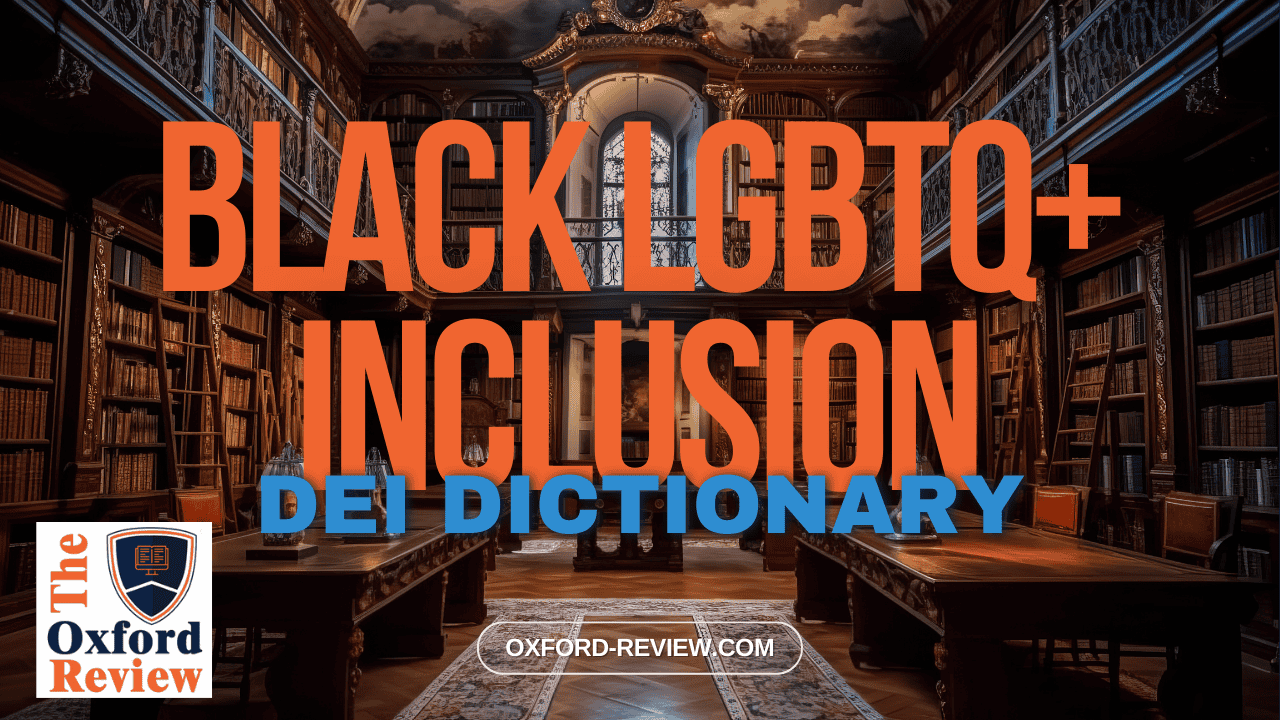Black LGBTQ+ Inclusion – Definition and Explanation

Understanding Black LGBTQ+ Inclusion: Fostering Diversity and Equity
In the realm of Diversity, Equity, and Inclusion (DEI), Black LGBTQ+ Inclusion stands as a crucial aspect of creating a more equitable and diverse society.
Definition:
Black LGBTQ+ Inclusion refers to the intentional efforts made to ensure that individuals who identify as both Black and LGBTQ+ feel respected, valued, and supported within various societal contexts, including workplaces, educational institutions, and communities. It encompasses acknowledging and addressing the unique challenges and experiences faced by Black LGBTQ+ individuals, while actively working towards creating spaces that celebrate their identities and contributions.
Significance:
Recognising and prioritising Black LGBTQ+ Inclusion is essential for several reasons:
- Intersectionality: Black LGBTQ+ individuals often navigate multiple layers of discrimination and marginalisation based on their race, sexual orientation, and gender identity. Failing to address their specific needs and challenges can perpetuate systemic inequalities and hinder their ability to fully participate and thrive in society.
- Representation and Visibility: Promoting Black LGBTQ+ Inclusion helps amplify the voices and experiences of a historically marginalised community. By fostering representation and visibility, it challenges stereotypes, dispels misconceptions, and enriches the broader understanding of diversity within society.
- Health and Well-being: Creating inclusive environments is critical for the mental, emotional, and physical well-being of Black LGBTQ+ individuals. When people feel accepted and supported, they are more likely to access necessary resources, seek support networks, and lead fulfilling lives free from discrimination and stigma.
Examples:
The UK has seen notable efforts towards promoting Black LGBTQ+ Inclusion across various sectors. One such example is the establishment of LGBTQ+ support groups specifically tailored to the needs of Black individuals. These groups provide safe spaces for sharing experiences, accessing resources, and building solidarity within the community.
Moreover, initiatives aimed at incorporating diverse perspectives and narratives into educational curricula and workplace policies contribute to fostering a culture of inclusion and equity. For instance, educational institutions may implement inclusive sex education programs that address the unique experiences of Black LGBTQ+ youth, while employers may offer diversity training sessions that highlight the importance of intersectional approaches to DEI.
Conclusion:
Black LGBTQ+ Inclusion is not merely about ticking boxes or meeting diversity quotas; it is about creating genuine and meaningful spaces where individuals of all identities feel seen, heard, and valued. By prioritising Black LGBTQ+ Inclusion, we move closer to building a society that celebrates diversity, fosters equity, and embraces the richness of human experiences. Embracing this ethos is not only a moral imperative but also a pathway towards creating a more just and inclusive world for everyone.
References:
Reid, S. (2023). Using a Queer of Color Critique to work toward a Black LGBTQ+ inclusive K–12 curriculum. Curriculum Inquiry, 53(2), 105-125. https://www.tandfonline.com/doi/abs/10.1080/03626784.2022.2121594
Be impressively well informed

Get the very latest research intelligence briefings, video research briefings, infographics and more sent direct to you as they are published
Be the most impressively well-informed and up-to-date person around...
